The Webcomic Overlook #64: Nawlz

I realize that I’m probably going to alienate a huge portion of my readers here, but I find xkcd to a rather hit-and-miss comic. This is coming from someone who has an engineering degree. (The again, as Sheldon from The Big Bang Theory says, “Engineering is merely the slow younger brother of physics.”)
However, I will point out that there are times when Randall Monroe is on the money. Take for example, this toon plotting the Probability the Book is Good vs. Number of Words Made up By Author which specifically targets cyberpunk author Neal Stephenson. It works because Monroe is on the money: the propensity for silly-sounding techno-terms in cyberpunk novels is pretty damn embarrassing.
I will concede that there’s at least one good reason why Cory Doctorow, William Gibson, or, hell, the Shadowrun series writers indulge in such tortured gobbledy-gook. If you don’t spend too much time over-analyzing the meanings of each abbreviation and slang term, the odd cadence puts you into a trance, more or less. There is a point when things become unknowable, and you, the reader, sort of accept it. The words are akin to Latin spoken in a pre-Vatican II liturgy, generating the enchantment of a magic spell, only rooted in the future rather than in the past. What I’m saying is that cyberpunk is a quasi-religious experience. Quite bizarre, when you think about it: cyberpunk is often surrounded in nihilistic, godless trappings, yet technology itself tend to take the unexplainable form of a mysterious deity.
I find it strange that, in my some two years of reading and reviewing webcomics, I haven’t come across many examples of cyberpunk comics. Sure, there’s plenty of zombie apocalypse comics, steampunk comics, and space opera comics. But cyberpunk? And when one such comic eventually did cross my path, I found myself a little hesitant to even call it a webcomic … that innocuous term suddenly sounding limiting and restrictive.
The comic, Nawlz, is written by Sutu, who’s real name is Stu Campbell and who hails from Australia. The Nice Produce blog says that he’s design HUDs for military applications. While this might be turn out to be nothing more than an irrelevant piece of trivia, I feel it helps me understand Nawlz‘s unique take on storytelling.

Incidentally, you may be disappointed that, unlike most of my other reviews, I won’t be posting any links to Nawlz beyond that one that links to the main page. That’s because Nawlz is done in Flash. You navigate the site by click on the Flash-enabled chapter links. I’ve tried to compensate by, for the first time, including a snapshot of the page as displayed. Click on the picture above and you’ll get a nice, large example of the image. This still doesn’t do the comic justice, however. For one, the resolution is too small. It should, instead, fill up the entire screen. Second, it doesn’t show any of the animation or sounds. Imagine the clouds moving across the sky in the first panel and seagulls cawing to each other, and you have a better idea of what Nawlz is like.
Rather than calling it a webcomic, Nawlz bills itself enigmatically as “interactive storytelling.” This term is fairly close to “interactive fiction,” which Wikipedia states includes text and adventure games like Zork, Leather Goddesses of Phobos, Myst, several Japanese sims here a saucer-eyed pre-teens asks you what you think her favor number is before she declares whether or not she had a fun date, and winners of the Interactive Fiction Competition. Competing entries for the latter, by the way, can be downloaded from the Interactive Fiction website.
Nawlz is similar, but not quite the same. First of all, it’s far more linear. The reader advances panel by panel by clicking on a hyperlink at the end of each speech bubble. If you decide to linger on a panel, there are times when you can activate a hotspot. With one click (or mouse-over) you may pull up stats on a bizarre creature’s appendage or cause a robot head to retract into its torso. They highly accentuate the Nawlz experience. You won’t, however, find yourself branching into any new directions beyond the main narrative. At no point will you suddenly find yourself dead because you neglected to abscond with a shield that you needed to protect yourself from the Wumpus.
The title of the comic comes from the name of the city, a sprawling metropolis of steel-and-glass towers that bathe the streets and alleyways in foreboding shadows. It’s a place that’s filled with anonymous strangers, both crowded and lonely at the same time. If you’ve seen Blade Runner, Akira, Ghost in the Shell, or any Matrix movie, you know this city.
It also exists — and feel free to correct me if I’m wrong, Nawlz fans — in some sort of hybrid state between the physical world and the digital world. To access a computer, you no longer have to open up a laptop, flick a slider on your iPod Touch, or even don VR goggles like someone from a low-budget 90’s movie about cyberspace. Rather it’s a trance-like state of mind, tuning your mental frequency until you pick up incoming information. A technologically enabled form of telepathy, when you think about it. It’s induced by shooting your brain with a Deadlight, a gun-like apparatus straight out of an episode of Futurama, that you aim at your cerebrum to tune to the right frequency.
The Deadlight user can voyage the virtual world in a Real, a custom-made avatar. You can visit worlds that are actually online store fronts which are more fanciful and colorful than the dreary bleakness of the physical city. You can access a musical playlist by tapping on buttons suspended in midair, and you can waste your time by creating your own hallucinations. You can receive calls and have the ghostly form of the caller appear before your very eyes. You can surround yourself with scantily clad virtual girls while you walk down the city streets.
The downside? An inevitable breakdown in the boundary of reality and imagination.
Now, if you ask me, telepathic internet takes the title for Worst Invention Ever. I’m the sort of guy who goes into paralysis when I hear my cellphone ring (the current Worst Invention Ever). But a visual communication interface where you can’t tell if that dead guy on the corner is for real or a spam message? That’s screwed up, man. Then again, it’s been said that science fiction is more about our current world than it is about the future. When you think about it, Nawlz is a reflection of the Information Overload Era. It’s where communication technology is alluring and annoying at the same time, and where you have to work extra hard to sift through the chaff to determine what’s real and what’s propaganda. And what’s a Deadlight but a souped-up iPhone?
The story itself is a bit difficult to follow. When I first typed up this review, I initially wrote, “Is there actually a story in this comic? …. we’re up to issue #10, over a year after Nawlz started … and there’s been hardly any justification for following the Mystery Gang.” I decided that didn’t seem fair, since Nawlz was one of those comics that deserved a second read, this time seen by eyes not alienated by the weirdness.
The main character in Nawlz is Harley, a dreadlocked slacker wandering the streets with no purpose beyond picking up Mad Biotronix clips (a.k.a. MBO’s, which are some sort of virtual Easter eggs — if you’re getting a wee bit tired of these cyberpunk terms, you’re not alone) and covering Nawlz City in his style. He’s sort of a cyber-graffiti artist, and a successful one. As the story begins, he’s covered 98% of Nawlz City in his style. His Real is called the Sleeper Giant, a creation remembered from Harley’s childhood. Visually, the Sleeper Giant looks a portrait of Harley as done by Brooklyn grafitti artist Seen (Richard Mirando).
One day, he encounters a bizarre, tentacled Real that resembles his own work. He senses that who ever is behind it is rather powerful. From that day forward, his destiny seems to be out of his hands. He’s harassed by several incongruous Reals in the virtual world: first a puffer fish, then a headless corpse, and, most ominously, an octopus. The octopus is seen in an MBO as a giant beast, whose tentacles are wrapped about the city. Harley isn’t the only person being haunted by visions. His bald-headed friend, Johnnie-Jon, was accosted at some point by a demonic cat trying to pull him toward a girl who may or may not be a real life person.
By the end of Issue #10, Harley and Johnnie-Jon are sheduled by their mutual buddy, Skyman, for a Seeding session. (Gah! Curse these cyberpunk terms!) Seeding is a practice where the user zaps himself with a Deadlight while using drugs, thus creating a customized trip. While Jon plans on using clips of a more carnal nature, Harley is thinking of using his MBO clips. What fate awaits him?
I’m not a huge fan of Flash-enabled comics (my criticisms of Zuda’s system have been recorded on this site once or twice). Also, many times when a webcomic artist tries to add animation to his panel, it comes off as unwelcome and distracting. However, it’s hard to imagine Nawlz any other way. The animated portions range from mega-spectacles like a swift frame-by-frame sequence where the Sleeper Giant runs around the city to tiny snippets like real-life footage of an octopus. Unlike other, less expert attempts, though, this footage never seem out of place. The static art, in fact, seems to grow organically from the more kinetic portions — reacting in direct result to the antics on display.
Not that Sutu’s illustrations are anything to ignore. Appropriately enough, Sutu draws Nawlz in an aggressively street art aesthetic. Titles pop in bold text and linger. Random scratches dominate the margins. The character designs are both edgy and fluid. Nawlz sticks with a dominantly black-and-white color palette, but not always. Sutu’s style is flexible enough to accommodate a staggering variety of settings, from the standard dire urban setting to a sequence set inside fancy gold picture frames to a flower garden were beautiful women emerge from the petals. Sutu heightens the sense of disorientation by playing around with the perspective. We get a very good sense that any of the characters are on the verge of losing their minds.
Beyond the visual engagement, Nawlz demands that the reader also use their auditory sense. The comic comes with its own soundtrack, credited mainly to Speakerwrath. Most of the times, it’s ambient noise, like the buzzing of a CRT screen or the crackle of white noise distortion. Sometimes there’s music. In issue #7, when Johnnie-Jon initially accesses an online lingerie store, the melody resembles a mysterious Asian melody as heard from department store speakers. When Johnnie-Jon activate a secret code, though, the music transforms to something more pounding, underground, and dangerous — fitting because the graphics themselves have changed to something resembling a rather disturbing dominatrix’s dungeon. It’s a strangely absorbing experience, as if you were watching a Victoria’s Secret angel morphing into Elizabeth Hurley at the end of Bedazzled.
After the second read-through, I found I understood Nawlz better than before. The characters, which I initially found flat and uninteresting, were more sympathetic now that I understood the stakes involved. However, I’m still not convinced it’s a story I want to follow for the long term. I’m not really all that interested in finding out who’s the mysterious diety behind the octopus, nor what glorious potential Harley will reach in the end. At the pace Nawlz is moving, I probably won’t get an answer to those questions for another 5 years. By then, real world Deadlights will probably be on the market and I’ll be busy casting my Real to play virtual Backgammon. While I perversely enjoy the moments where Sutu goes into technical detail about how gadgets in Nawlz work, it does tend to slow the story to a crawl and cause me to absentmindedly tap my fingers on the table.
But still, Nawlz is about the spectacle. And so far, it’s unmatchable.
So is Nawlz really a webcomic? Or something entirely new, a glimpse into one of the earliest examples of “interactive storytelling”?
I posted earlier a PW Beat quote by Charles Kochman, where he wonders when webcomics will reach “that Sgt. Pepper moment of using the unlimited resources of the internet to tell their story in a way that print never could.” I like that term, “that Sgt. Pepper moment,” even if I do think that album is overrated an in no way describes what Kochman is describing here. (Maybe I just like how it sounds. I would’ve personally gone with “Whipped Cream and Other Delights moment,” but it just doesn’t roll off the tongue as well.)
With Nawlz, have webcomics finally reached that Sgt. Pepper moment? In no way could a print copy successfully integrate all the elements on display here. The mood music, the animation, the interactivity, the stronger engagement of one’s senses. Hell, there’s even the cheeky drug references. All we need is for Nawlz to end in a 15 kHz high pitched tone followed by an unending loop of incomprehensible studio chatter.
Rating: 4 stars (out of 5)




NOTE: On a somewhat related note, reading Nawlz makes me want to read Tad Williams’ Otherland again. There are a lot of overlapping concepts. One of these days, I’m going to have to ask Mr. Williams whether or not he’s interested in doing a similar-style webcomic.
Posted on January 14, 2009, in 4 Stars, action webcomic, motion comic, sci-fi webcomic, The Webcomic Overlook, WCO Big Review, webcomics and tagged Nawlz. Bookmark the permalink. 9 Comments.

















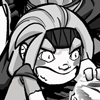


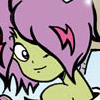




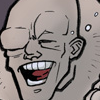











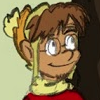










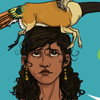








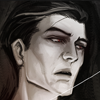
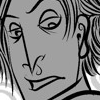




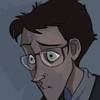














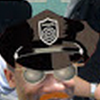





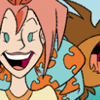
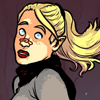



















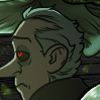





The biggest problem with Flash based comics is that they take forever to load if you have crappy internet.
I really love this comic and the ‘binders’ are a trip ( literally). Big ups to Sutu!
Oddly enough, I’m with you on the “hit-or-miss” sentiment with XKCD.
as for the problem about flash taking forever to load due to crap internet, i told stu that before he released the first issue and we both agreed that if you don’t have decent internet, then do something about it or you’ll miss out. Most people that would be interested in this would have that anyways
http://www.aecomics.com.br
Pingback: nawlz » Nawlz review at Webcomic Overlook
Pingback: Looking back at Scott McCloud’s ten webcomic tips « The Webcomic Overlook
Pingback: The Webcomic Overlook #164: The Boy With Nails For Eyes | The Webcomic Overlook
Pingback: The Webcomic Overlook #235: Hobo Lobo of Hamelin | The Webcomic Overlook